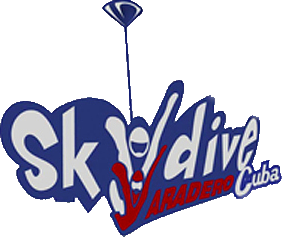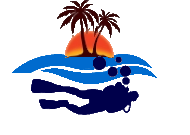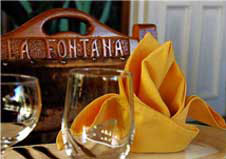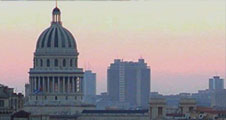Hemingway’s correspondence within the reach of specialists (Part I)
By: Gladys Rodríguez Ferrero | Source: CUBARTE | 23 de July 2009
“Digital information – the evidence of the world we are living in – is more fragile than the fragments of papyrus found buried together with the pharaohs”. Paul Conway.
The first contact of the US writer Ernest Hemingway with Cuba takes place on April 1st, 1928, when he remained some hours in Havana, due to a refuelling stop during his trip to Key West on the “Orita” English ship. He stayed, as we know up to now, at the Ambos Mundos (Both Worlds) Hotel. So that his second wife, Pauline Pffeifer, could rest from the fatigues of the journey, taking into account her advanced pregnancy.
Eleven years later this marriage was definitely broken and in April, 1939, Hemingway invited Martha Gellhorn, who would later become her third wife, to join him in Havana. It is her who discovers Finca Vigía, she rents it and makes some remodelling to the house, and there the new couple settles. About one year later, Hemingway decided to buy Finca Vigía, in December, 1940, for the price of $ 18,500, using part of the money that the Paramount paid to him for adapting For whom the Bells Toll for the cinema.
Hemingway’s Cuban legacy is constituted by pieces that, with the passing of time, have acquired the condition of unique collections all over the world. It constitutes, in the writer’s long Cuban life, the last and unexplored border of the studies on the writer. They are vital pieces of the US literature and also of the cultural relations between both the US and the Cuban people. This documentary testimony allows a deep and complete knowledge of the life of Ernest Hemingway in Cuba.
The library, the record collection and the hunting trophies are also preserved in what used to be his home. A great deal of very important documents appeared while the Museum made an inventory of the whole collection and they have been patiently inventoried, classified, kept, restored and they are presently preserved with most advanced methods that the present technology and the economic conditions of the country allow.
The corresponding analyses are carried out to safeguard the Documentary Heritage of which Hemingway’s Cuban legacy is part. The immediate and not immediate needs of preservation of the originals as well as of the memory are taken into account. The National Council of Cultural Heritage and the Ernest Hemingway Museum plan then the strategy that they will put into practice in 2003, and which will count on the collaboration of the North East Documents Conservation Center of the United States (NDCC), referring to the preservation of documents treasured by the Museum. Let us think that more than 80% of this heritage is in paper and we will then understand the importance of this work.
The order that the museum institution would determine for the execution of such strategy was preliminary defined. First, the preservation and/or restoration of such pieces would take place. The values codification that the collections own and the preservation estate of these Sections were taken into account for the selection of these ones. Once this work was finished the digitalization of these ones would take place.
These documents were scanned and digitally preserved in DVD with a detailed work. Once finished this part of the process, the entire digitalized image was transferred to another medium: the microfilm. And that is how from January, 2009, the national and foreign specialists can have access, in the Cuban institution, to that inestimable source of information from its digital image.
Logically, reaching these results took a long process that began with the signing, on November 11th, 2002, of an Agreement between the Social Science Research Council (SSRC) of the United States and the National Council of Cultural Heritage (CNPC) of the Republic of Cuba. The document was signed by Dr. Eric Hershberg, by the US part, and by Dr. Marta Arjona, by the Cuban part. The US congressman James P. McGovern and the Commander in Chief Fidel Castro Ruz signed the document as exceptional witnesses.
This historic document reflects clearly that all the work of preservation, restoration and digitalization of these original sources (hand-written, typed, printed, etc) would be carried out in Cuba.
The works listed in the paragraph above were carried out at the Center of Preservation and Restoration of Movable Items (CENCREM) and they were done by Cuban specialists of high professional level working there. The responsibility of digitalization was the task of the specialists of the Direction of Informatics of the National Council of Cultural Heritage.
The way in which these works were organized, initially, was as follows: the specialists of the Ernest Hemingway Museum determined what documents would be joined to this process and decided to begin with the Sections of Correspondence, Works by Hemingway, Maps, Photography, Books, Magazines and Leaflets.
In 2003 this work began with the Sections of Correspondence, Works by Hemingway, Administrative Documents and Mary Welsh Funds.
They were taken to the CENCREM in an orderly fashion and there, after the scientific diagnosis, it was determined what the right process would be for each page of the documents that would be intervened.
The successful execution of this work required the use of indispensable materials and some special instruments that were expensive but necessary if we wanted to complete the work we had set out with good results.
These materials arrived gradually through the SSRC. Their arrival was filled with difficulties, incongruence, lacks of understanding. The blockade was also “blocking” the good intentions of specialists of both countries. No one could understand how there could be obstacles to the preservation of top level primary sources for the knowledge and understanding of the work of Ernest Hemingway, one of the most important US writers of the last century.
We could count on the technical collaboration and training of our staff. This took place in two directions. Two Cuban specialists were trained at the North East Documents Conservation Center (NDCC), in Boston, United States.
Besides, US specialists travelled to Cuba. Walter Newman, Amy Wood, Bernard Reilly, Monique Fisher, Deborah Wender and Gary Albright, among others, visited Cuba to train the Cuban staff. And they trained the specialized technical staff of the Ernest Hemingway Museum as well of the CENCREM in the works of preservation of documents, photography and the library.
On the other hand, the training of the team of specialists of the Direction of Informatics of the National Center of Cultural Heritage for the digitalization of all the original papers that had been previously preserved and restored took place in Cuba also. This was carried out by the US specialists Amy Wood and John Grimshaw.
Cuba could only receive, in matters of equipment for the automation of documents: a digital camera, a scanner and a laptop. Afterwards, another higher resolution scanner that was precisely the one need for the digitalization process was as faithful as possible to the original document. No other equipment of the ones required to continue the work was allowed to enter. For this reason, the marginalia appearing in some two thousand volumes of the private library of the writer has not been undertaken yet.
There is no doubt about the importance that Cuba had in the life of this genial writer of the twenty century, acknowledged also as the bronze gold of the US literature. How could aspects, ridiculously described as politic, be interposed in the preservation of these documents? How could this cultural bridge be “blockaded”?
To be continued…
Translation: Yusimí Rodríguez (Cubarte)























